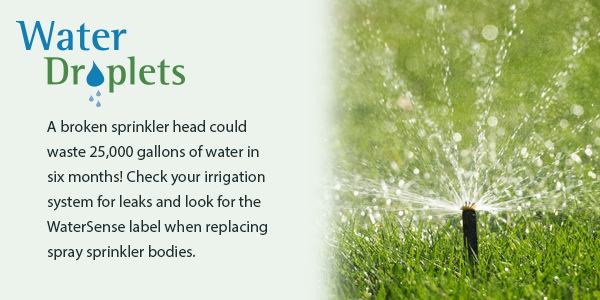The WaterSense Current: Summer 2020
Issue LIV
In This Issue:
- Partners Make it Possible
- Celebrate Smart Irrigation
- Jump Into Water Savings
- Your System Can Perform Better Under Pressure
- Let Water Savings Grow…Be Picky About Plants
- A Water Efficiency Star in the Lone Star State
- EPA to Maintain WaterSense Program Specifications
Partners Make it Possible!
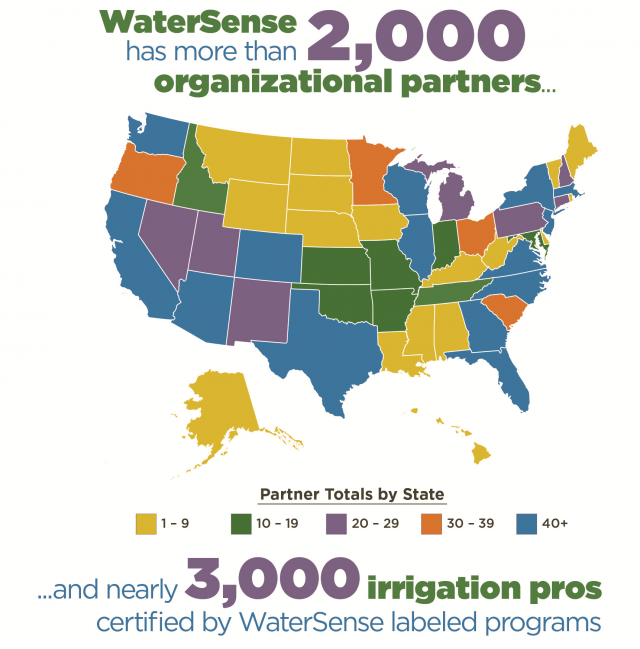
Saving water is a team effort and WaterSense has a great team helping consumers save water, energy and money. Thanks to the efforts of more than 2,000 partners from across the country, WaterSense has helped consumers an estimated 4.4 trillion gallons of water since 2006, including 870 billion gallons of water in 2019. And the savings don’t stop there – WaterSense products have helped consumers save an estimated $87 billion in water and energy bills. These savings could not be accomplished without our partners, including the manufacturers that make products, the retailers that sell them, and the water utilties and local governments that work to promote water conservation practices. Catch up on other WaterSense highlights in the 2019 Accomplishments Report.
Celebrate Smart Irrigation Professionals
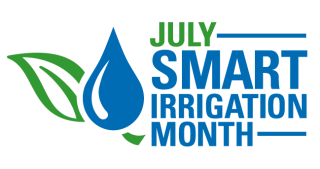
Jump Into Water Savings

Organic mulches can include wood chips, bark, pine needles, and grass clippings. Inorganic mulches can include stones, pebbles, or brick chips. If using organic mulch, leave a few inches of space around tree trunks and bush roots to prevent rot.
For a free mulch option, after you mow, leave the grass clippings on your lawn or spread them on your flower garden. The clippings decompose and release valuable nutrients back into the soil to feed grass and plants, reducing the need for nitrogen.
Not only does mulch help you conserve water, it can improve the look of your landscape too. With many different types of mulch available, you can choose a variety that fits with your landscape design to boost your water savings and curb appeal—it’s a win-win! Learn more about water-efficient landscaping.
Your System Can Perform Better Under Pressure
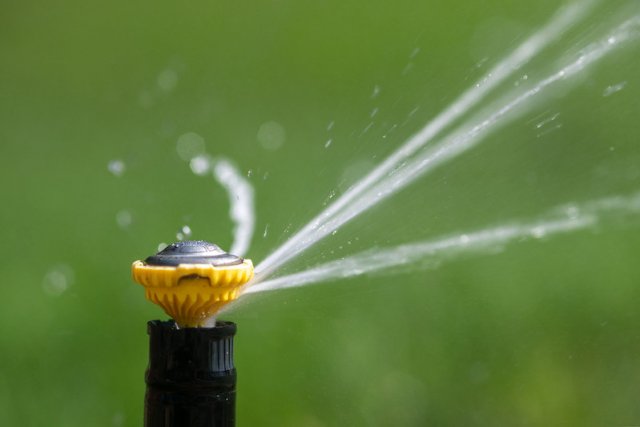
Irrigation system components can be disturbed or damaged due to winter weather and other factors, so the start of the watering season is the perfect time to spruce up your sprinkler system. Begin your water-saving mission with four simple steps: inspect, connect, direct, and select. Inspect for missing or broken sprinkler heads that can waste water and damage your plants with overwatering. Leaks can also occur at the joints between sprinklers and the piping, so check for tight connections, or find an irrigation professional to conduct a system audit. EPA maintains a directory of irrigation professionals who have successfully completed all the requirments of one or more WaterSense labeled professional certification programs. Direct your sprinklers towards the landscape to avoid spraying water where it’s not needed and consider selecting a WaterSense labeled spray sprinkler body to replace existing equipment if your home’s water pressure is higher than what is recommended for your system.
Operating an irrigation system at pressures that are too high can cause excessive flow rates, misting, fogging, overspray, and uneven coverage. Spray sprinkler bodies that have earned the WaterSense label can reduce water waste and improve plant health by regulating water pressure at the spray nozzle. Replacing existing sprinkler bodies with WaterSense labeled models throughout an inground irrigation system can save a home with an average sized residential landscape more than $60 per year in water and sewer costs, meaning they pay for themselves in just over two years!
Let Water Savings Grow… Be Picky About Plants
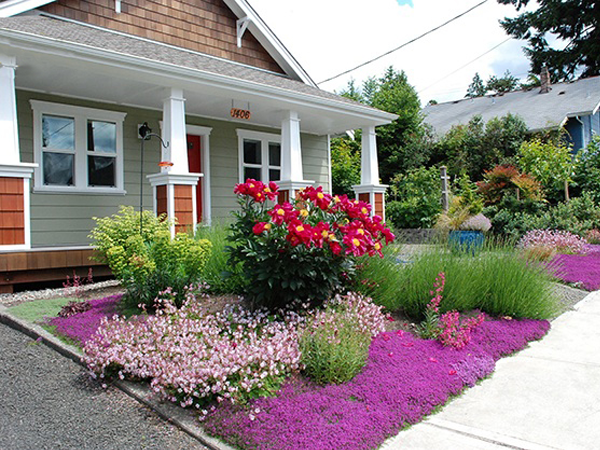
When designing your landscape with water efficiency in mind, be picky and choose plants native to your geographic region. Native plants are adapted to your local climate and soil conditions, which means they require less supplemental water and fertilizer. If you live in an arid part of the country, pick drought-tolerant plant varieties. These plants require little water and can survive in conditions with minimal rainfall—perfect for your landscape and water bill. Need help finding the right plants for the right place in your yard? Check out a plant list you can browse by state, or visit your local landscape or irrigation supply store online or in person where these stores are accessible.
You should also familiarize yourself with the water and sunlight needs of different plants to see which plants have similar requirements. When designing your landscape, place plants in “hydrozones”—groups of plants with comparable watering needs in the same area. Hydrozoning reduces water waste and protects plants from being over- or under-watered, since you water to each zone’s specific needs. Also consider the location of zones within your yard, as different plants thrive under different elements. Plants that prefer shade may not do well in direct sunlight, and this could lead to wasteful watering.
Check out the WaterSense Landscape Photo Gallery for some inspiration!
A Water Efficiency Star in the Lone Star State

To promote Sprinkler Spruce-Up, for example, the City offered a three-part class series covering quick sprinkler fixes, do-it-yourself drip irrigation, and proper irrigation controller use to empower residents to water their landscapes efficiently. The City’s innovative online learning module, Water, Water Everywhere: A Guide to Sprinkler Repair, was accessed more than 6,000 times!
The City began a new Water Ambassador Program in 2018 for adult volunteers to learn and promote efficient irrigation and landscaping principles, along with leak detection and repair, in their communities. Plano also promoted water-smart landscape design and WaterSense labeled outdoor fixtures during its sixth annual WaterWise Landscape Tour.
Plano also promotes water savings indoors. In 2018, the City of Plano took fourth in the Wyland National Mayor’s Challenge for Water Conservation competition. To reach students in its community, the City collaborated on outreach for students competing in the FIRST® LEGO® League regional championship, which focused on hydrodynamics to improve water efficiency and water quality.
The City of Plano has worked with The Home Depot and Lowe’s Home Improvement stores on promotions and provided rebates for WaterSense labeled toilets and other water-saving devices. To celebrate Fix a Leak Week, for example, Flo the WaterSense “spokesgallon” dropped by for the City’s Fix a Leak Week Workshop in March 2018, when a plumbing expert from The Home Depot and several volunteers taught residents how to detect water leaks and make simple repairs.
EPA to Maintain WaterSense Program Specifications
The America’s Water Infrastructure Act (AWIA) of 2018 required EPA to review WaterSense specifications that had been issued before 2012. EPA has issued a determination announcing that, based on the review, the agency will not make updates or changes to five of its product specifications. This action announces that the EPA is seeking input and requesting information on any data, surveys, or studies to help assess consumer satisfaction with WaterSense labeled products, which could inform future product specification development. The EPA is also seeking input on how to design a study or studies to inform future reviews that incorporate customer satisfaction considerations. The EPA is also requesting input on whether it should include consumer satisfaction criteria into the WaterSense program guidelines and, if included, what criteria should be considered and how. Information about the review and the Federal Register notice are available on the WaterSense Product Specification Review page. EPA will accept comments related to the notice’s request for information on consumer satisfaction with products through July 24, 2020.
Water Droplets
